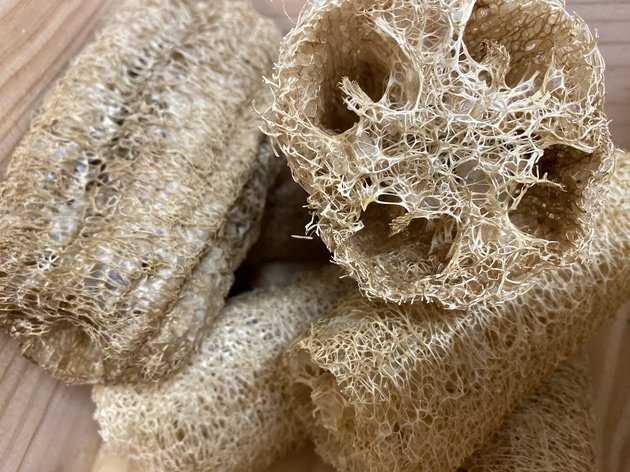The Ultimate Natural Sponge – Growing and Using Loofah
Many people mistakenly think loofahs are sea sponges, but they’re actually a plant—one you can grow right in your own backyard! Beyond their cleaning power, loofahs are an eco-friendly, biodegradable alternative to synthetic sponges. But are they truly antibacterial? And how can you grow your own? Let’s dive in.
The Loofah: Nature’s Answer to Kitchen Sponges
In a world of modern conveniences, few things compare to the simple genius of a homegrown loofah. Unlike synthetic kitchen sponges that seem to go sour within days, a loofah holds up wash after wash, resisting odors and lasting for months.
Are Loofahs Antibacterial?
Loofahs gained popularity as an eco-friendly kitchen sponge, but with that came claims—some saying they have antibacterial properties, others claiming they breed bacteria. So, what’s the truth?
Some research suggests that loofahs’ open-pore structure can trap debris, potentially leading to bacterial growth. However, other studies highlight loofahs’ rapid drying ability, which discourages bacteria from thriving. Additionally, loofahs contain lignin, a natural compound that resists microbial breakdown and pH fluctuations.
Interestingly, scientists are now studying loofahs for applications beyond dishwashing, such as water filtration and even electricity generation!
The efficient open-pore network of a loofah sponge.
My Three-Year Experience Using Loofahs
After three years of using loofahs for dishwashing, I can confidently say I’ll never go back to synthetic sponges. Unlike their plastic counterparts, loofahs don’t develop that foul, sour smell. I don’t bleach or disinfect them, and I certainly don’t replace them every few weeks like some internet experts suggest. I simply rinse them out and let them air dry.
On average, my kitchen loofahs last several months, and my shower loofah? It lasted over eight months before I finally replaced it!
How to Grow Your Own Loofah
Loofahs grow on vines, much like cucumbers, and are even edible when harvested young. However, if your goal is to grow sponges, the fruit must fully mature and dry on the vine before harvesting.
Here are some growing tips:
Start early: If you live in a cooler climate (like Missouri, Zone 5A), start seeds indoors in February. Soaking seeds in water for 24 hours before planting helps with germination.
8 loofah vines growing along a fence line
Give them space: Loofah vines need a strong trellis or fence for support.
Be patient: To produce sponges, the gourds must turn brown and dry completely before harvesting. Once peeled, the inner fibrous structure is revealed—strong yet soft, gently abrasive, and perfect for cleaning.
The Ultimate Cleaning Sponge
Since growing loofahs, I no longer buy synthetic sponges or plastic shower scrubbies. They clean just as well—if not better—and last far longer. If you’ve never used a homegrown loofah, I highly recommend finding one at a local farmer’s market or growing your own. Once you experience the durability and eco-friendliness of a natural loofah, you’ll never want to go back!
If you want to get your hands on one of our organically grown Loofah’s head over to our shop where we sell kitchen size and shower size sponges and also seed packets if you would like to grow your own.





